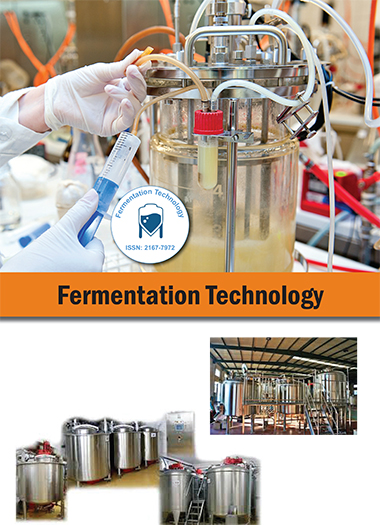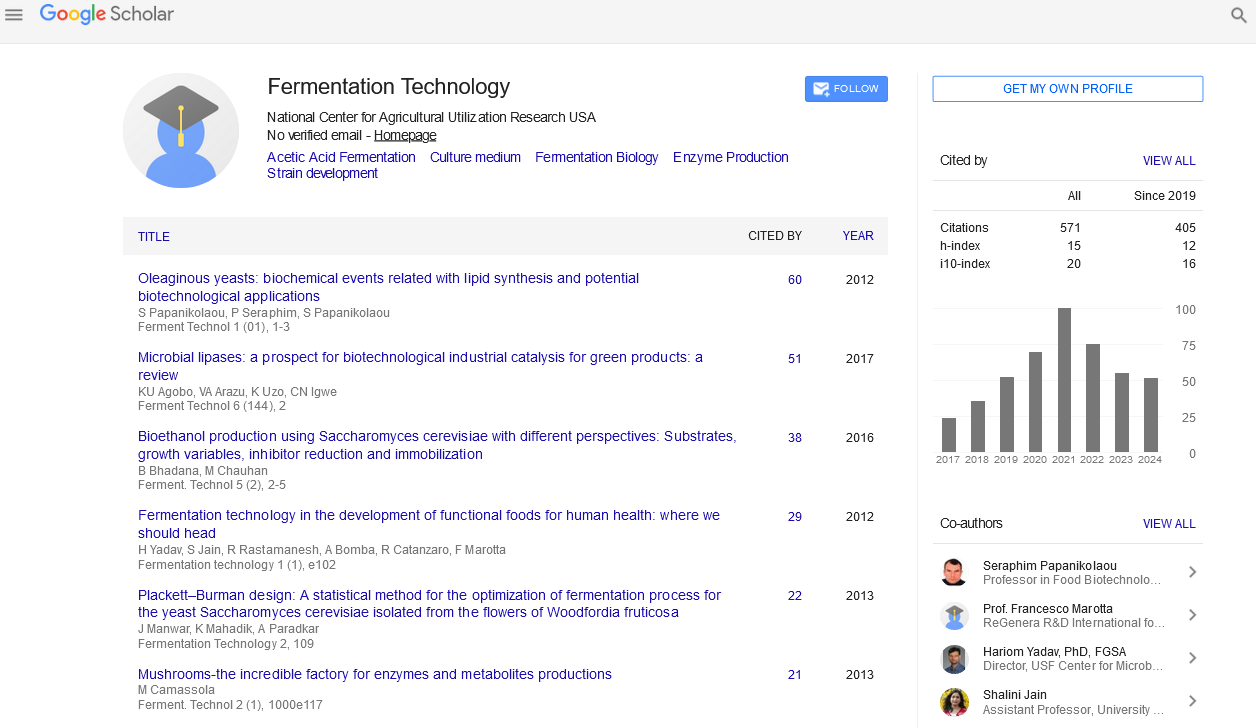Indexed In
- Open J Gate
- Genamics JournalSeek
- Access to Global Online Research in Agriculture (AGORA)
- RefSeek
- Hamdard University
- EBSCO A-Z
- OCLC- WorldCat
- Publons
Useful Links
Share This Page
Journal Flyer

Open Access Journals
- Agri and Aquaculture
- Biochemistry
- Bioinformatics & Systems Biology
- Business & Management
- Chemistry
- Clinical Sciences
- Engineering
- Food & Nutrition
- General Science
- Genetics & Molecular Biology
- Immunology & Microbiology
- Medical Sciences
- Neuroscience & Psychology
- Nursing & Health Care
- Pharmaceutical Sciences
Abstract
Lactic Acid Production from Potato Peel Waste, Spent Coffee Grounds and Almond Shells with Undefined Mixed Cultures Isolated from Coffee Mucilage from Coatepec Mexico
Andrés Bretón-Toral, Sergio R Trejo-Estrada and Armando G. McDonald
Food waste is considered a non-valued material and the volume is increasing with population and these wastes can be used as raw materials to produce useful bioproducts. Potato peel waste (PPW), almond shells (AS) and spent coffee grounds (SCG) are such wastes and were used as feedstocks to produce lactic acid (LA) via fermentation. Two lactic acid producing bacterial consortia were screened/selected based on glucose and arabinose fed media and were each used for subsequent fermentations. The food wastes were subjected to either: (i) starch gelatinization, (ii) hydrothermal pretreatment, (ii) hydrothermal and cellulase pretreatment, and (iv) hydrothermal and cellulase pretreatment buffered with CaCO3 prior to fermentation. The glucose selected consortia was better than the arabinose selected consortia for generating LA, and thus was used for further fermentations trials using pretreated biomass. The best LA yield (0.175 g LA g-1 biomass) was from gelatinized AS than the hydrothermal plus cellulase pretreatment. LA productivity was improved for the hydrothermal plus cellulase pretreated biomass by addition of CaCO3 as buffer to give LA production rates of 0.063 g LA g-1 PPW, 0.045 g LA g-1 AS and 0.049 g LA g-1 SCG.

